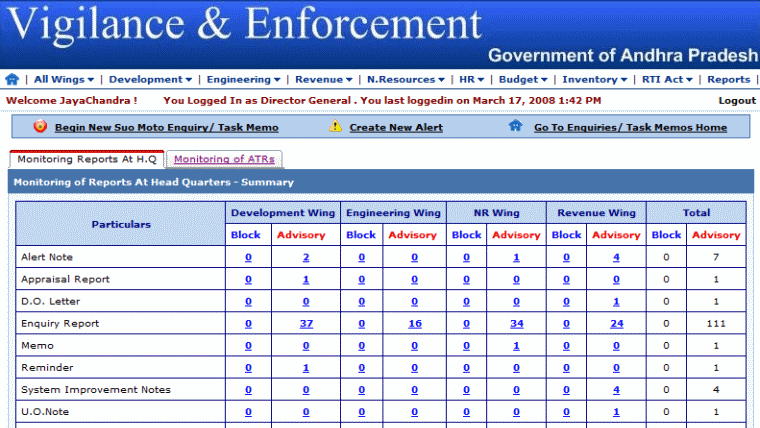Summary
The Vigilance & Enforcement Department has several duties and responsibilities assigned by the government of Andhra Pradesh. The web application addresses the requirements of the workflow using an enterprise architecture to "perform, monitor and track the enquiries/investigations in identifying the misuse and wastage of funds and to plug the loss of revenue and its realization." The application caters to the requirements of the department personnel by effectively completing the tasks relating to the above responsibility. In addition, the software is intended to increase the overall work efficiency of personnel while facilitating smooth workflow and providing timely MIS to the stakeholders of the application.
Approach
After being awarded the project, we formed a team comprised of business analysts, UI designers, senior software engineers and a specialist database administrator. An internal project plan with tasks spanning requirement analysis, technical design/ architecture and development milestones was prepared to help guide the team in completing the project in a timely fashion. The business analysis and graphic design personnel completed their planned tasks after receiving input from our client, resulting in comprehensive requirement specification and functional screen specifications documentation. On approval of the said documentation, the technology team completed its task of designing and engineering the application using SCRUM methodology.
Development Process and Result
The project involved complex workflow requirements in addition to the need for a highly secure application. The senior technical design team prepared a robust design using the Microsoft enterprise architecture guidelines for high data intense and high secure systems. The development team split the project into small tangible releases for testing by the QA team and the client. This approach facilitated the collection of end user input and helped improve the overall usability of the application. On completion of the individual functional units/modules, the application modules were integrated and on regression testing deployed for UAT. The UAT time was considerably decreased and the client's personnel were motivated since they'd experienced the application during the split small releases. The application was deployed in a production environment and handed over to the client.



